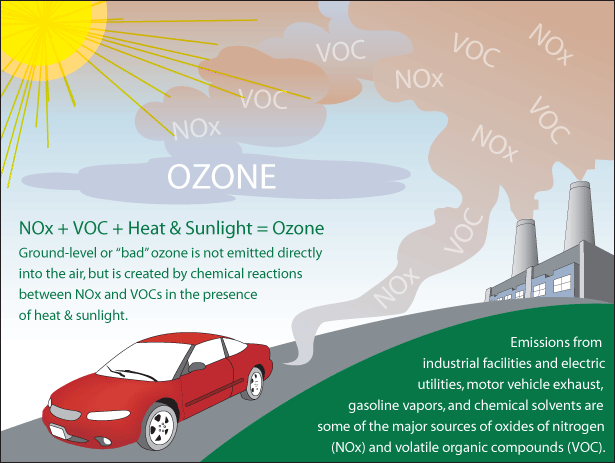| A cross-agency U.S. Government Web site. List of AIRNow partner agencies |

|
National Overview
Partners
Air Quality Basics
The AQI for...
Key Topics:
Resources |
| Contact Us |
| Privacy and Security Notice |
| Accessibility |
Ozone
Ozone is a gas composed of three atoms of oxygen. Ozone occurs both in the Earth's upper atmosphere and at ground level. Ozone can be good or bad, depending on where it is found:
- Good Ozone. Ozone occurs naturally in the Earth's upper atmosphere - 6 to 30 miles above the Earth's surface - where it forms a protective layer that shields us from the sun's harmful ultraviolet rays. Manmade chemicals are known to destroy this beneficial ozone. An area where the protective "ozone layer" has been significantly depleted-for example, over the North or South pole-is sometimes called "the ozone hole.” The United States, along with over 180 other countries, recognized the threats posed by ozone depletion and in 1987 adopted a treaty called the Montreal Protocol to phase out the production and use of ozone-depleting substances. EPA has established regulations to phase out ozone-depleting chemicals in the United States. Learn more
-
Bad Ozone. In the Earth's lower atmosphere, near ground level, ozone is formed when pollutants emitted by cars, power plants, industrial boilers, refineries, chemical plants, and other sources react chemically in the presence of sunlight. Ozone at ground level is a harmful air pollutant.

For more information on ozone please visit:
- Ozone: Good Up High, Bad Nearby
- Ozone and Your Health
- Smog – Who Does it Hurt
- EPA Ground-level Ozone
For more information on other common air pollutants please visit:
- EPA's six common air pollutants.
- Air Quality Index – A Guide to Air Quality and our Health
| |
||||||||||||
|
AIRNow is a government-backed program. Through AIRNow, EPA, NOAA, NPS, news media, tribal, state,
and local agencies work together to report conditions for ozone and particle pollution.
State, Local and Tribal Partners.
|
||||||||||||
|
||||||||||||





